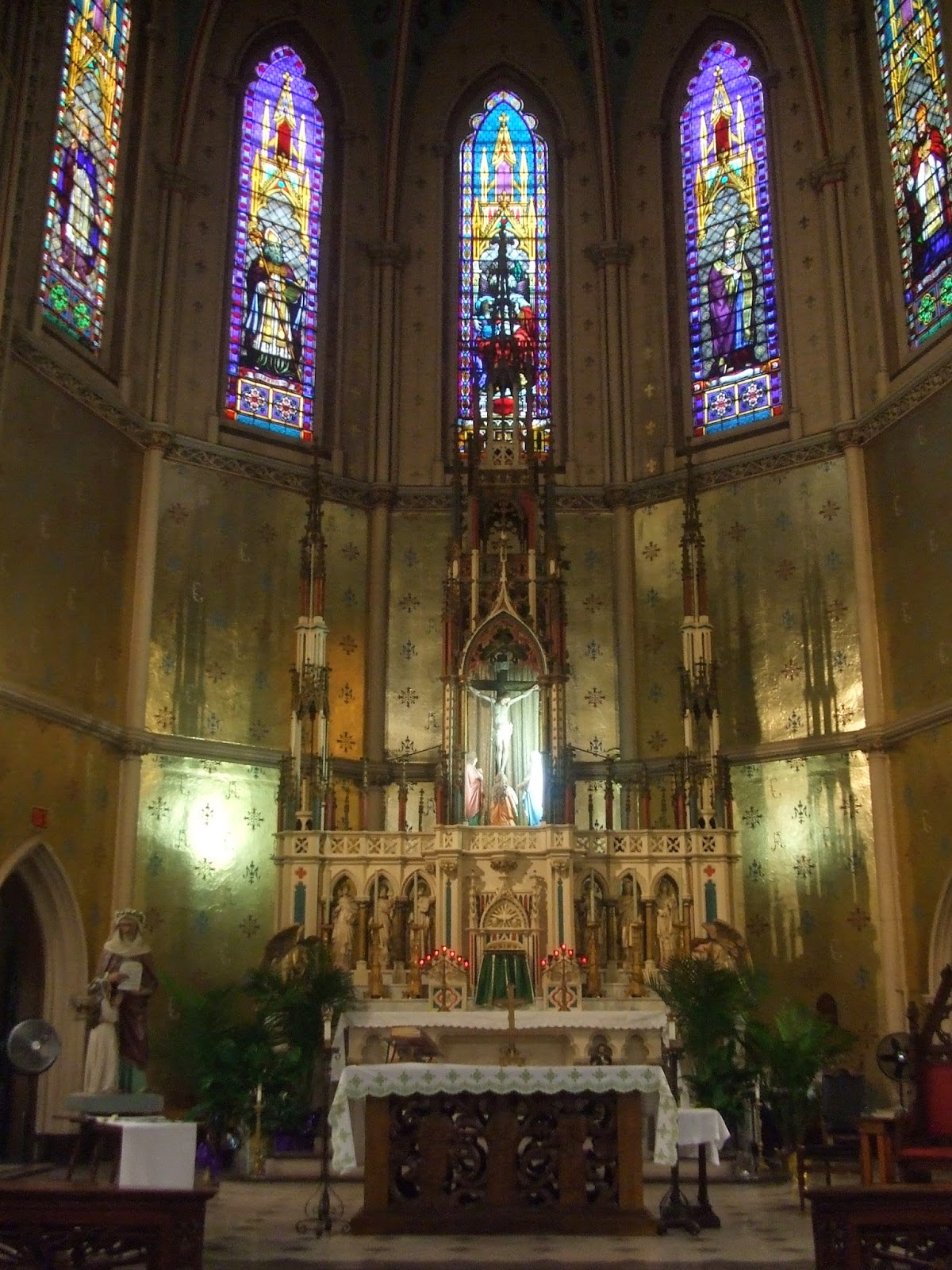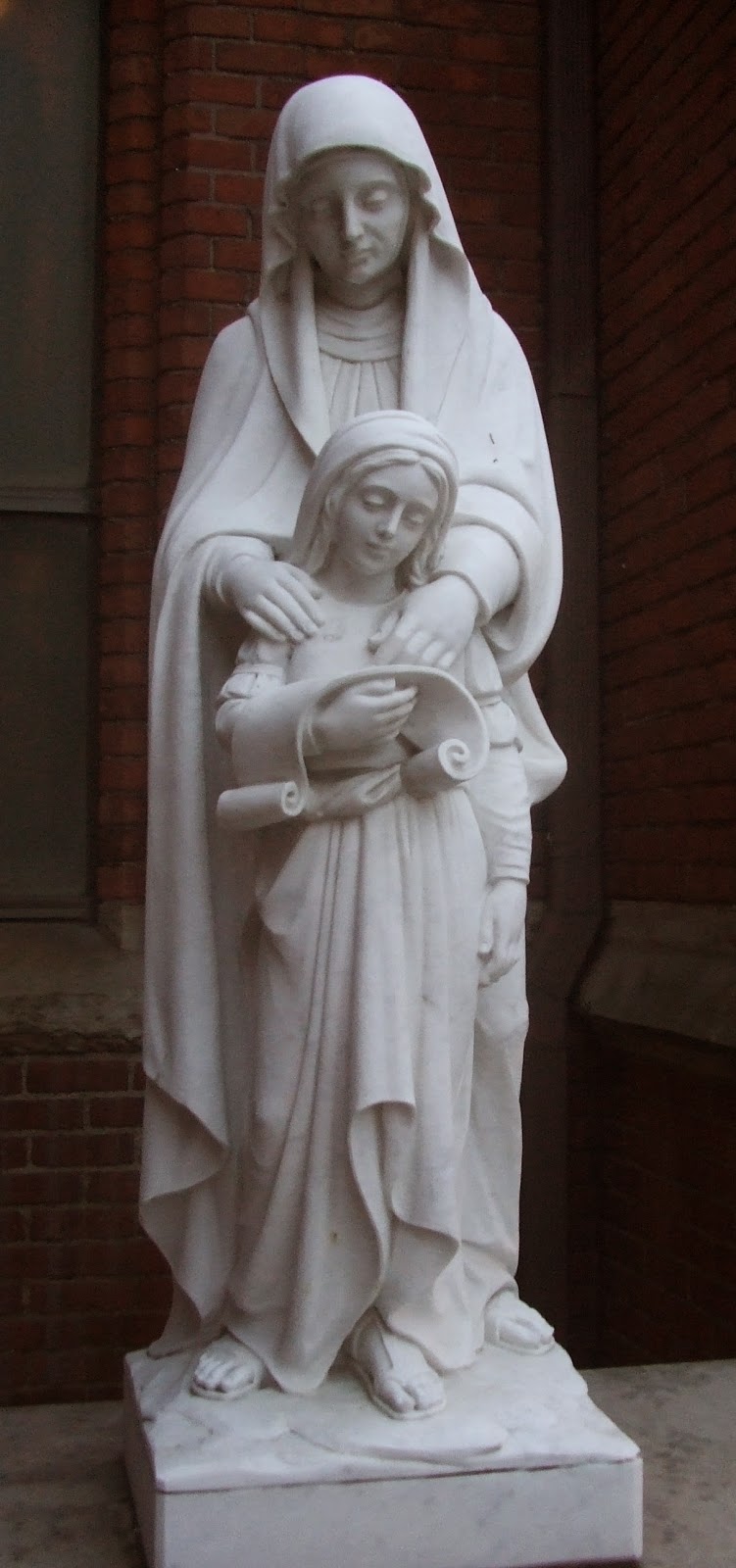On July 24, 1701, Antoine de la Mothe Cadillac landed on the shores of the Detroit River near where Hart Plaza stands today. Two days later, on the Solemnity of St. Anne, a log chapel was dedicated. A plaque at the northwest corner of Griswold and Jefferson marks the location of the first church.
On October 5, 1703, the church, rectory, and several other buildings were destroyed in a fire. Eleven years later, another church was intentionally destroyed by the soldiers of Fort Pontchartain to prevent it from housing enemies.
 |
| A scale model of a previous church displayed in the narthex |
The church has a capacity of 1,400 worshipers and is the largest wood-frame building in the city. Many pieces from the "stone church" are still used in the current church. Among them: the 1818 cornerstone, the altar in the chapel, communion rail, one bell, clerestory windows, and the statue of St. Anne and child Mary.
Parish membership dwindled in the 1960s and maintenance costs climbed. In 1966, the church faced demolition but a $750,000 fundraising drive saved them. Today, the parish is home to 850 families, 3/4 of them being Latino.
Gilded reredos back a high altar made of white marble and wood.
St. Rita adores a crucifix in between St. Joseph's altar and the Sacred Heart altar.
Many crutches and braces at St. Anne's altar serve as testimony to her intercession for physical cures. Next to this stands an altar to Our Lady of Guadalupe.
Multiple statues of St. Anne and St. Mary, including one accompanied by St. Joachim, are found throughout the church.
Ste. Anne's reportedly houses the oldest stained-glass windows in the city and some say are original to the church.
The Star of David is found in the rose window and in the floor of the nave.
Wooden spires, each about one foot tall, stand at each end of the pews.
Msgr. Russell Kohler serves as pastor of both Ste. Anne's and nearby Most Holy Trinity. He is assisted by Fr. Timothy Laboe and Fr. José Jaime Del Toro, CSB.
Daily Mass is celebrated in the chapel Tuesdays at 5:15pm (English), Thursdays at 6:00pm (Spanish), and First Fridays at 5:15pm. Saturday Vigil Mass is at 5:00pm. Sunday Masses are at 8:30am, 10:00am (Spanish), and Noon.
We previously featured Ste. Anne de Detroit here.
More info: bulletin archive & parish website
More photos: Sherlock Photo & Flickr




































No comments:
Post a Comment